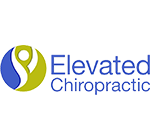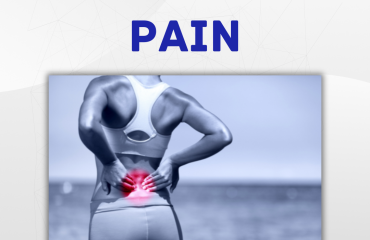Pain, especially muscle and joint pain, is often surrounded by misconceptions about pain that can lead to confusion for many. Chiropractic practitioners get asked all the time, “How long will the pain last?” It doesn’t matter if the pain is chronic pain, neck pain, or low back pain – the answer is, “It depends!” Your neck pain or severe pain depends on a lot of factors. It depends on the cause of your low back pain – is it a lumbar strain or other pulled muscle versus sciatica or in the facet joints? It depends on how long you’ve had your chronic pain. And it also depends on how your body heals and responds to chiropractic treatment. Chronic pain from arthritis in facet joints or disc pain causing sciatica will take longer and require more visits with a chiropractic practitioner than pulled muscles, muscle spasms, muscle strains, or tightness from poor posture. And a patient who eats a lower inflammatory diet rich in nutrients or a patient who is younger will typically heal faster on average even if they have the same injury as a patient who eats a lot of junk food or who is older. Nutrition, age, and other health factors like diabetes, high blood pressure, obesity, smoking, alcoholism, or even side effects from prescription medications can affect how your body heals after an injury. The more health risks you have, the longer it can take to experience pain relief, even if it’s an acute injury like a muscle spasm or muscle strain.
A prevalent misconception of pain relief and spinal adjustments that patients have is that they only need one chiropractic adjustment at one appointment and whatever pain they are feeling will be gone and never come back. Unfortunately, this is an unrealistic expectation. Sometimes a patient will get better from their injury with one chiropractic treatment. But there are many other patients that need multiple chiropractic adjustments or visits to a chiropractic office to experience pain relief. It all depends on the cause of your pain and your individual health risks. That’s why it’s important to find a chiropractic office with a practitioner who will ask you about your overall health and health risks. A practitioner who will take your individual health into consideration when putting together a chiropractic treatment plan. This is because not all patients heal the same or have the same functional status. If you’re having disc pain or nerve pain, you will need more visits to a chiropractic clinic than someone who has whiplash or a sprain/strain injury. That’s because disc pain or nerve pain involve structures that naturally take longer to heal compared to muscles and joints involved in a whiplash injury. However, this doesn’t include a patient’s health risks or personal health. A patient with diabetes may heal slower even with a whiplash injury than a patient with the same injury without diabetes, or even a patient without diabetes who has more chronic pain. This is also true depending on if a patient does physical activity. If a patient does lots of physical activity, they may have less severe pain or intense pain and more symptoms that are acute and require more physical therapy – think less chronic and more acute injuries like muscle spasms. With so many factors affecting healing time and pain relief, it is important to find a chiropractic clinic that tailors a chiropractic treatment plan that is specific to each patient and can help with physical therapy for the patient to rehab from their condition appropriately.
Another misconception about pain is that where you feel the pain is where the pain is being caused. You feel neck pain and you’re convinced that’s where the cause of pain is located. However, your chiropractic practitioner tells you it’s coming from your shoulder. Now this may sound crazy at first, but if you let your practitioner explain they will tell you that sometimes neck pain can be caused by dysfunctional movement patterns of your shoulder due to muscles that attach not only to your neck but also to your shoulder area. These neck muscles can help assist in shoulder movement if your shoulder muscles have a dysfunctional movement pattern from muscle weakness, shoulder sprain, rotator cuff tear, or other shoulder injuries. Therefore, a chiropractic practitioner may check other areas where the pain is not directly located – to check areas of regional interdependence – or areas of the body that may be associated or contribute to the area of complaint.
Furthermore, the healing process of disc-related injuries, such as those from a lumbar herniated disc, often defies patients’ expectations. Contrary to the misconception that chiropractic adjustments can ‘fix’ a herniated disc instantly, the reality is that these conditions require a nuanced approach, often excluding direct manipulation of the disc itself. If someone has lower back pain from a lumbar herniated disc it can be very painful and take several weeks to a few months to be completely pain free. Many patients think that chiropractic practitioners can help a lumbar herniated disc by a quick spinal manipulation putting the disc back in place and their lower back pain will automatically disappear. However, this is not how a chiropractor can help with a disc bulge. A cervical disc bulge and/or a lumbar disc bulge will never go “back into place” or “get sucked in” without a surgical procedure like a discectomy or spinal fusion surgery. Instead, a chiropractor can use spinal manipulation and soft tissue therapy to reduce disc inflammation. The cervical disc bulge will always be there, but when it is inflamed, the disc bulge can cause pain or even numbness and tingling into the extremities. This disc bulge inflammation can occur more than once, resolve, and then come back again. Disc bulge inflammation can be very cyclical in nature – which is why many seek treatment from their chiropractor and make chiropractic appointments when their disc pain flares up.
Disc bulge pain can also refer pain into different parts of the body – this is a common misconception among patients about their symptoms. Most people think disc pain is either right where the disc is located or that it can travel into the legs or arms when pressing on a spinal nerve. However, disc pain as a symptom, can also distribute pain in a specific pain referral pattern called a sclerotome. Each disc level has a specific sclerotome or pain referral pattern. For example, a C6 or C7 disc bulge that bulges to the right can refer pain to in between the shoulder blades – closer to the right side where the disc bulge is located. Each cervical disc, thoracic disc, and lumbar disc will refer pain to a different area of the body – to which a doctor of chiropractic will know when a patient goes in for their appointment.
Pain can be a very complicated thing and a very confusing topic for chiropractic patients. It can be caused by various parts of the body and can include several contributing factors. It can be intense pain from a lumbar strain or pulled muscle or it could be tightness from poor posture. Pain can be chronic or acute, and it can be in a location that is far from where the pain is originating. It can also be cyclical in nature or be pain that refers in a specific pattern. Therefore, it is very important to talk to your doctor about the pain you are experiencing. A doctor of chiropractic will know what is causing your musculoskeletal pains and if the pain you are experiencing is not from your muscles, nerves, or joints – a chiropractor can refer you to a doctor who can treat the other parts of your body that is causing your pain.




